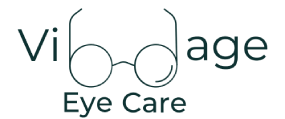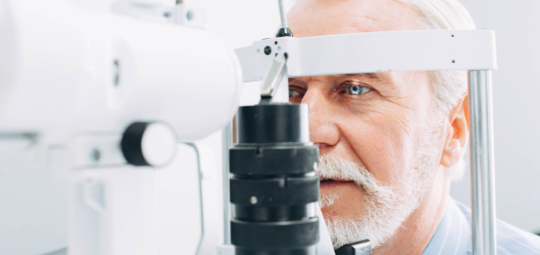Your eyes do more than help you see—they also support your balance, comfort, and quality of life. When vision starts to change, other symptoms may follow.
Cataracts are most commonly linked to cloudy vision, glare, and trouble seeing in low light. But they may also contribute to discomfort like headaches or dizziness. While they’re not a direct cause of headaches, cataracts can impact how your eyes and brain process visual information, sometimes leading to strain or tension.
What Are Cataracts?
Cataracts occur when the lens of the eye becomes cloudy over time. This causes them to block some light from passing through the eye. Cataracts can make your vision feel hazy or dull, and they often develop gradually, without pain.
You might notice:
- Blurred or dimmed vision
- Glare or halos around lights
- Difficulty seeing at night
- Faded or yellowed colors
- Double vision in one eye
While aging is the most common cause, factors like long-term UV exposure, diabetes, smoking, past eye injuries, and the use of medications like corticosteroids can also contribute to cataracts.
Types of Cataracts & How They Impact Your Vision
There are several kinds of cataracts, each affecting a different part of the lens:
- Nuclear cataracts develop in the center of the eye and may cause difficulty seeing in low light or temporary nearsightedness.
- Cortical cataracts form around the edges of the lens and can interfere with contrast and create glare.
- Posterior subcapsular cataracts form at the back of the lens, often progressing quickly and affecting close-up tasks like reading.
- Congenital cataracts appear at birth or early childhood and may be due to genetics or prenatal factors.
We can help identify which type of cataract is present and explain how it may affect your daily activities.
How Vision Changes Can Lead to Headaches
Although cataracts don’t directly trigger headaches or dizziness, the visual challenges they create can contribute to these symptoms.

Eyes Working Overtime
Cloudy or inconsistent vision makes it harder for your eyes to stay focused. You may find yourself squinting, leaning forward, or turning your head to see better, especially while reading or using screens. Over time, this visual strain can cause fatigue.
Muscle Tension & Visual Fatigue
Struggling to see clearly can cause the muscles around your eyes, temples, and forehead to become tense. This may lead to dull, aching headaches, particularly after tasks that require visual focus.
Trouble with Balance or Depth
Changes in depth perception, contrast sensitivity, and peripheral vision can all impact your balance. People with cataracts may feel unsteady, especially on stairs or in unfamiliar spaces. In some cases, these visual changes can lead to a sense of dizziness or disorientation.
Sensitivity to Bright Light
Cataracts can cause light to scatter as it enters the eye, making glare from headlights or sunlight feel overwhelming. For some people, this sensitivity can lead to visual confusion or headaches, especially when moving between bright and dim environments.
Helpful Habits to Ease Discomfort
While cataracts themselves can’t be reversed without surgery, some day-to-day changes can help reduce related strain:
- Use better lighting: Focused task lighting can make reading or crafting more comfortable.
- Wear UV-protective sunglasses: Shielding your eyes outdoors can help slow progression.
- Minimize screen glare: Anti-reflective coatings on your lenses or screen filters can reduce eye strain.
- Take breaks: Follow the 20-20-20 rule—every 20 minutes, look 20 feet away for 20 seconds.
- Avoid driving at night if possible: Headlight glare can feel intense for people with cataracts.
These small adjustments can make a big difference in managing discomfort while supporting long-term eye health.
Staying Ahead of Cataract Progression
Cataracts don’t always cause immediate or obvious symptoms, which is why regular eye exams are essential. These visits allow your optometrist to monitor subtle changes and recommend updates to your prescription when needed.
When cataracts begin to interfere with daily life, surgery may be the next step. Cataract surgery is a safe and effective outpatient procedure that replaces the cloudy lens with a clear, artificial one, thereby restoring more comfortable, clearer vision.
Vision That Supports the Life You Love
It’s easy to brush off headaches or visual discomfort, especially if they come and go. But when your eyesight changes, your overall well-being can be affected in ways you don’t expect—like trouble concentrating, feeling off balance, or dealing with eye fatigue.
Our team at The Village Eye Care is here to help you feel confident and comfortable in your vision. Whether you’re noticing signs of cataracts or want to better understand your eye health, we’re here to support you.
Book an eye exam today and take the next step toward clearer vision and lasting comfort.
















